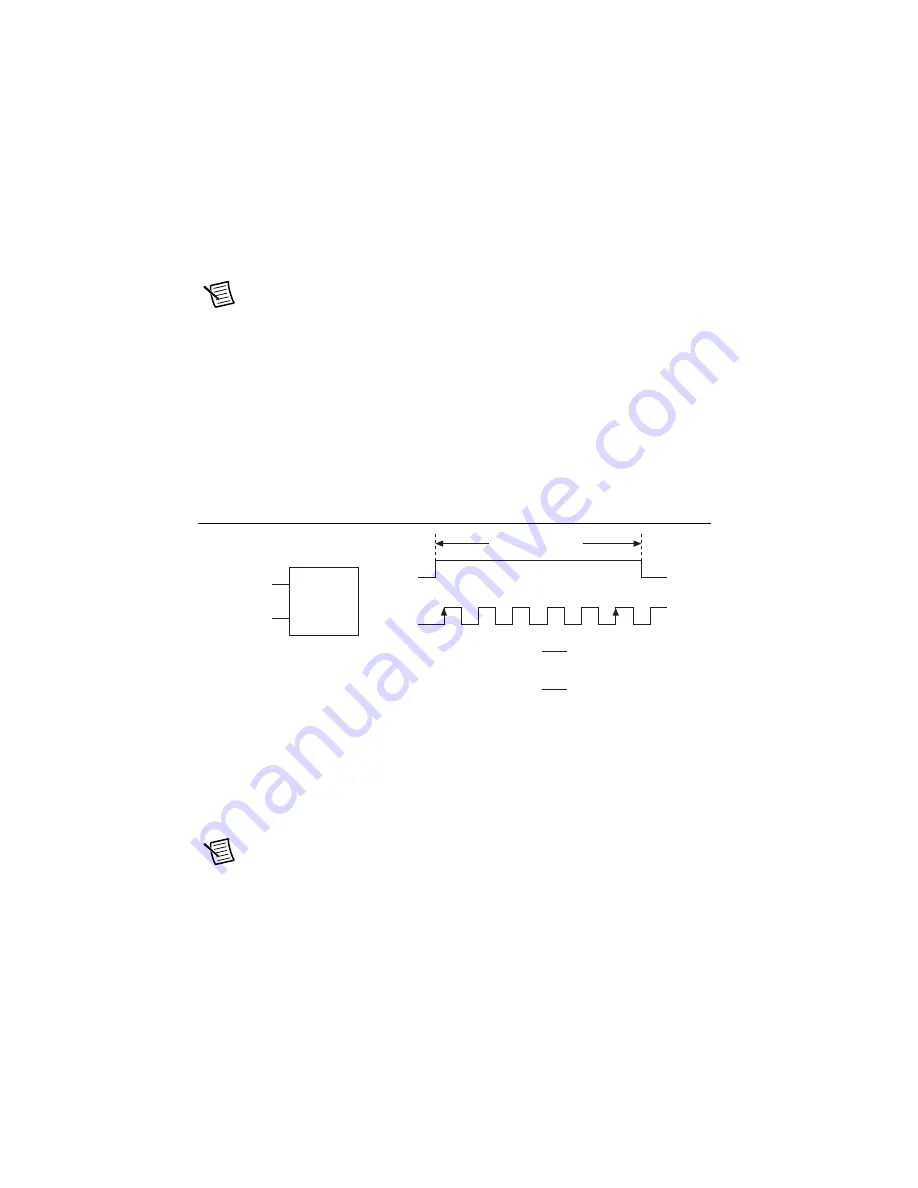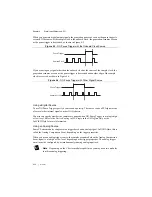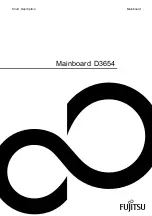
5-12
|
ni.com
Chapter 5
Counters
High Frequency with Two Counters
For high frequency measurements with two counters, you measure one pulse of a known width
using your signal and derive the frequency of your signal from the result.
Note
Counter 0 is always paired with Counter 1. Counter 2 is always paired with
Counter 3.
In this method, you route a pulse of known duration (
T
) to the Gate of a counter. You can
generate the pulse using a second counter. You also can generate the pulse externally and connect
it to a PFI terminal. You only need to use one counter if you generate the pulse externally.
Route the signal to measure (
fx
) to the Source of the counter. Configure the counter for a single
pulse-width measurement. If you measure the width of pulse
T
to be
N
periods of
fx
, the
frequency of
fx
is
N
/
T
.
Figure 5-13 illustrates this method. Another option is to measure the width of a known period
instead of a known pulse.
Figure 5-13.
High Frequency with Two Counters
Large Range of Frequencies with Two Counters
By using two counters, you can accurately measure a signal that might be high or low frequency.
This technique is called reciprocal frequency measurement. When measuring a large range of
frequencies with two counters, you generate a long pulse using the signal to measure. You then
measure the long pulse with a known timebase. The cDAQ chassis can measure this long pulse
more accurately than the faster input signal.
Note
Counter 0 is always paired with Counter 1. Counter 2 is always paired with
Counter 3.
P
u
l
s
e
fx
P
u
l
s
e
fx
G
a
te
S
o
u
rce
1
2
…
N
P
u
l
s
e-Width
Me
asu
rement
T
=
N
fx
Fre
qu
ency of
fx
=
T
Width of
P
u
l
s
e
N
Width of P
u
l
s
e (
T
)








































